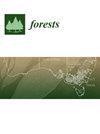Silver Fir (Abies alba Mill.): Review of Ecological Insights, Forest Management Strategies, and Climate Change’s Impact on European Forests
IF 2.4
2区 农林科学
Q1 FORESTRY
引用次数: 0
Abstract
The silver fir (Abies alba Mill.) is among the most valuable conifers in Europe for ecological and economic reasons. Throughout the course of history, primarily in the 20th century, its share in stands has been declining due to ill-suited management practices, especially clear-cut management, air pollution (SO2 and NOX emissions), and wildlife-induced damage. This literature review compiles findings from 338 scientific papers. It describes futures for silver fir and its distribution, ecological requirements, threats and diseases, seed production and nurseries, and forest management practices with emphasis on ongoing climate change. Based on recent knowledge of fir ecology and population dynamics, small-scale shelterwood and selection management have been introduced in fir stands, which have also stabilized them. Fir is an essential species for maintaining high stability and biodiversity, especially on planosols and in waterlogged habitats. Owing to its shade tolerance and environmental plasticity, it can coexist very well with many tree species in mixtures, which can increase the productive potential of stands within the natural range in Europe. The average stand volume of mature fir stands ranges from 237–657 m3 ha−1. For its successful natural regeneration, it is essential to reduce cloven-hoofed game and thus prevent bud browsing damage. The attractiveness of fir in terms of heavy browsing is the highest of all conifers (52% damage). On the other hand, fir is a species relatively resistant to bark stripping and the spread of secondary rot compared with Norway spruce (Picea abies [L.] Karst.). Under global climate change, fir is expected to shift to higher elevations with sufficient precipitation, while in the southern part of its natural range or at lower elevations, outside water-influenced habitats, it is likely to decline. Climate change is intricately linked to the heightened prevalence of forest pathogens with significant damage potential in Europe, necessitating careful consideration and strategic adaptation within management practices of fir forests.银冷杉(Abies alba Mill:)生态见解、森林管理策略和气候变化对欧洲森林的影响回顾
出于生态和经济原因,银冷杉(Abies alba Mill.)在整个历史进程中,主要是在 20 世纪,由于不当的管理方法,特别是砍伐管理、空气污染(二氧化硫和氮氧化物排放)以及野生动物造成的破坏,银冷杉在林木中所占的比例一直在下降。本文献综述汇编了 338 篇科学论文的研究结果。它描述了银冷杉的未来及其分布、生态要求、威胁和疾病、种子生产和苗圃以及森林管理方法,重点是正在发生的气候变化。根据最近对冷杉生态学和种群动态的了解,在冷杉林中引入了小规模的防护林和选择管理,这也稳定了冷杉林。冷杉是保持高度稳定性和生物多样性的重要树种,尤其是在浮土和涝害生境中。由于其耐荫性和环境可塑性,它可以与许多树种很好地混交共存,从而提高欧洲天然林区内林分的生产潜力。成熟冷杉的平均立木蓄积量为 237-657 立方米/公顷。要想成功实现杉木的自然再生,就必须减少蹄类动物的活动,从而防止萌芽被啃食破坏。在所有针叶树中,杉木对猛烈啃食的吸引力最大(52% 的损害)。另一方面,与挪威云杉(Picea abies [L.] Karst.)在全球气候变化的影响下,冷杉预计会向降水充足的高海拔地区转移,而在其自然分布区的南部或海拔较低的地区,在受水影响的栖息地之外,冷杉的数量可能会减少。在欧洲,气候变化与具有重大破坏潜力的森林病原体的高流行率密切相关,因此有必要在冷杉林的管理实践中进行仔细考虑和战略调整。
本文章由计算机程序翻译,如有差异,请以英文原文为准。
求助全文
约1分钟内获得全文
求助全文
来源期刊

Forests
FORESTRY-
CiteScore
4.40
自引率
17.20%
发文量
1823
审稿时长
19.02 days
期刊介绍:
Forests (ISSN 1999-4907) is an international and cross-disciplinary scholarly journal of forestry and forest ecology. It publishes research papers, short communications and review papers. There is no restriction on the length of the papers. Our aim is to encourage scientists to publish their experimental and theoretical research in as much detail as possible. Full experimental and/or methodical details must be provided for research articles.
 求助内容:
求助内容: 应助结果提醒方式:
应助结果提醒方式:


